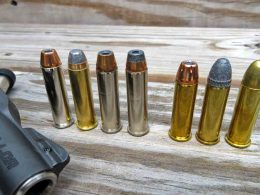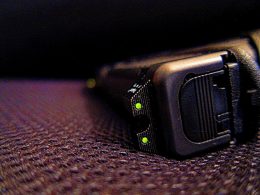Canadian manufacturer, ELCAN (Ernst Leitz Canada) produced the C79 optical scope, which has been predominantly used by the Canadian military since 1989. The scope is still being used on Canada’s C7A1 rifle and the C9A1 light machine gun. Although we think a fixed 10-power scope would be more suitable here, this scope seems to offer enough that warrants a closer look.
Priced at around $850, the ELCAN C79 optical sight is widely used on several rifles like the Diemaco C7, FN MINIMI, FN MAG and CZ-805 BREN firearms. ELCAN also manufactures scopes in 6X and 10X, the Hi-Mag product range, as well as the night vision scopes for the Blackcat range.
The Scope
The C79 is an optic that magnifies targets by 3.4x and offers a very clear visual and optical clarity, so the scope is ideal for short to medium distance targets. It’s a solid scope, so slightly heavier, and can boast the following notable features:
- Having a superior glass grade, proprietary lens coating, an objective lens diameter of 28mm and the 3.4X magnification, produces an exit pupil of 8.23mm.
- The scope exterior is coated with rubber armor. Fixed sights are cast into the upper part of the coating for close-in work.
- It doesn’t have adjustments for windage or elevation, which reduces possible entry of elements like water that might penetrate the assembly. This scope also doesn’t include any focusing or parallax adjustments.
- On the whole, the body of the scope has a robust and sturdy feel.
The Reticle
The simply designed reticles offer a focus and aim point. Different scope manufacturers use different designs, like fine crosshairs or duplex that facilitate a central target point. Thick reticles are better in low light or if crouching in foliage because the eye is draw to the center view.
The C79 scope’s reticle is user-friendly and intuitive with its basic picket-type design. This takes away the complexity of learning how to effectively use mil-dots.
At the top of the picket, the triangular part lights up in the dark because of the tritium coating. On the right side of the picket, two horizontal hash marks are visible that subtends 76cm at 300m and the picket includes two longitudinal hash marks on each side.
The scope’s reticle achieves its purpose in hitting out at 300 meters although it’s less easy to factor in windage.
The Mount
The mount will attach to any Picatinny (MIL-STD-1913) rail by hand tightening two thumbscrews on the left of the mount. Torque specs weren’t specified. Hex nuts, found on Badger and Leupold rings, may have been a better option as they can be torqued exactly. However, at the least, a slotted thumbscrew for a coin to tighten the scope to the rail could have been included. The mount has adjustments for windage and elevation, and yet the windage is affected using a coin; these adjustments are on the front left of the mount.
Above the windage screw is a clockwise arrow cast into the mount; however, there are no markings to indicate the direction (left-right) in which the group will move if the screw is adjusted. Luckily, this has since been rectified on the mount.
Because of the two cams, elevation adjustments are possible. The scope is available in two configurations, namely the 7.62 NATO and 5.56 NATO. On the 7.62 NATO, the cam can increase from 200m to 800m, in 100-meter increments. The scope can be raised or lowered to the dialed elevation. Intermediate positioning isn’t possible between the 100-meter increments.
To achieve zeroing for elevation, flick the cam’s tab out to disengage it from the scope. In weapon zero status, flick the tab back to re-engage it. Unfortunately, the mount is the weaker link in the design of the C79 scope. It’s shortcomings are due to the external location of the adjustments for windage and elevation, so there’s more chance for dirt and dust particles, and snow or ice to get trapped and seize the adjustments. Anyway, external adjustment scopes normally force a different stock to cheek weld based on the elevation setting dialed. This external adjustment scope wasn’t the best thought out design.
The Bigger Picture
By now, it’s evident that this is definitely not a scope for sniping and more suited to marginal combat because of the following attributes:
- Having a high risk of external matter ingression that could break the elevation adjustment functioning is not a great or acceptable feature.
- If your rifle has a cocking handle on the left, like the FN-FAL and you retract the handle, it’s easier to get obstructed by the left sided thumbscrews that attach the scope mount to the rail, specifically when wearing gloves. The same problem occurs when using the AR-15, but with less protrusion.
- The scope is also heavier so if you include that with the weight of the externally adjustable mount, it becomes a bit impractical and cumbersome. While the C79 scope was intended for “in-line†weapons, like the AR-15 and AR-10, there are modifications that would’ve made this scope a frontrunner. For example, if it included a fixed mount, did some ballistic adjustments on the reticle, or had internal adjustments like the Leupold M3 or Kahles ZF-69/84/M/95.
The Bottom Line
Overall, the C79 scope has both its advantages and disadvantages. On the positive side, the scope is manufactured from top-class optics and the optical assembly is extremely robust.
On the downside though, the mounting system is debatable and the external adjustments for the windage and elevation are not the most practical.
In summary, the Canadian manufactured C79 3.4x scope is fully supported with a wide selection of spares and technical data. Built for use in severe climates, this scope has high performance in daylight, identification and accuracy. The optical design is designed for clear view, rapid targeting, and minimal distortion. The scope is very effective on high-powered rifles and rated highly as an accurate targeting device.

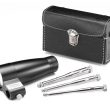
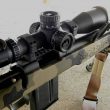
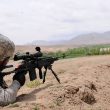
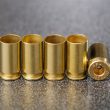

![4 Best 3Gun Scopes [2018]](https://www.snipercountry.com/wp-content/uploads/2018/06/4-Best-3Gun-Scopes-2018-260x195.jpg)
